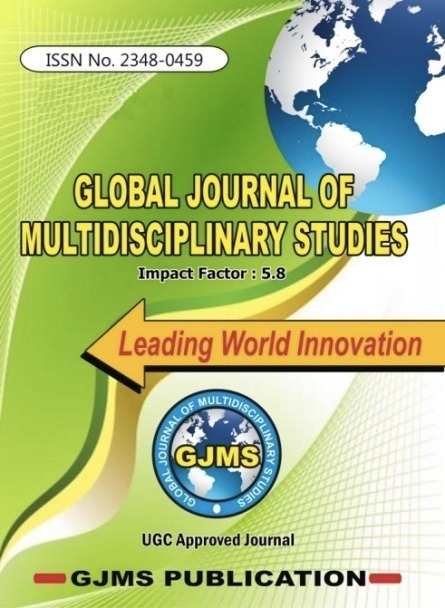Employee Promotion System in Organizations: A Comparative Study of Public and Private Sector of North India
Keywords:
Promotion, Significant, Public, Private, Comparative, Organizations, Differences, Percent, Packages, Technique, Structured, Employees.Abstract
The present study has been based on primary data collected from 100 employees of Public and Private organizations established in North India. A self structured questionnaire was utilized for the purpose of data collection. The data was analyzed using the statistical technique independent sample‘t’ test through SPSS version 18. Reliability of the data so collected was checked by using Cronbach’s Alpha Reliability Co-efficient. The findings were tested at 0.05 percent level of significance for obtaining significant difference between promotion system in public and private organizations of north India. In the finding of the study, it has been found that there is significant difference in promotion system in public and private organizations of north India.References
Ajila, C. & Abiola, A. (2004). Influence of Rewards on Workers Performance in an Organization. Journal
of
Social Sciences, 8(1), 7-12.
Bretz, R. D., Milkovich, G. T. & Read, W. (1992). The Current State of Performance Appraisal Research
and
Practice: Concerns, Directions and Implications. Journal of Management, 18(2), 321- 352.
C.I.P.D. Report. (2006). How Engaged are British Employees. Survey report, London. Retrieved at:
http://www.CIPD.co.uk/surveys on 25.03.2017.
Islam, R., & Ismail, AZH. (2008). Employee motivation: a Malaysian perspective', International Journal of
Commerce & Management, 18(4), 344-362.
Joinson, Carla. (1996). Reward your best employees. HR Magazine, 4 (49-55).
Khalid Said Al-Jarradi. (2011). An Investigation into the Effectiveness of the Reward System in the
Government
Sector in the Sultanate of Oman and the Potential for Introducing a Total Reward Strategy. A thesis
Submitted to The University of Manchester for the degree of Doctor of Philosophy in Human Resources
Management in the Faculty of Humanities. Retrieved at https://www.escholar.manchester.ac.uk on
25.03.2017
Lawler, E.E. (1973). Motivation in work organizations. Belmont CA: Wadsworth Publishing. Wadsworth
Publishing
Co Inc. Retrieved at https://www.amazon.co.uk on 25.03.2017
Macourt, W & Wong A, R. (2003). Limits to strategic HRM: The case of the Mauritian Civil Service.
International
Journal of Human Resource Management, 14(600-618).
Njanja, W. L., Maina, R. N., Kibet, L. K. & Njagi, K. (2013). Effect of Reward on Employee Performance:
A Case
of Kenya Power and Lighting Company Ltd., Nakuru, Kenya. International Journal of Business and
Management, 8(21), 41-48.
Oloko, O. (1972). Impact of Management Nationality on Workers Commitment to Industrial Employment
in
Nigeria. Journal of Management Studies, 9(2), 206-226.
Raven, B. H. (1992). A Power/Interaction Model of Interpersonal Influence: French & Raven thirty years
later.
Journal of Social Behavior and Personality, 7(2), 217–244.
Downloads
Published
Issue
Section
License
Copyright Notice
Submission of an article implies that the work described has not been published previously (except in the form of an abstract or as part of a published lecture or academic thesis), that it is not under consideration for publication elsewhere, that its publication is approved by all authors and tacitly or explicitly by the responsible authorities where the work was carried out, and that, if accepted, will not be published elsewhere in the same form, in English or in any other language, without the written consent of the Publisher. The Editors reserve the right to edit or otherwise alter all contributions, but authors will receive proofs for approval before publication.
Copyrights for articles published in World Scholars journals are retained by the authors, with first publication rights granted to the journal. The journal/publisher is not responsible for subsequent uses of the work. It is the author's responsibility to bring an infringement action if so desired by the author.

